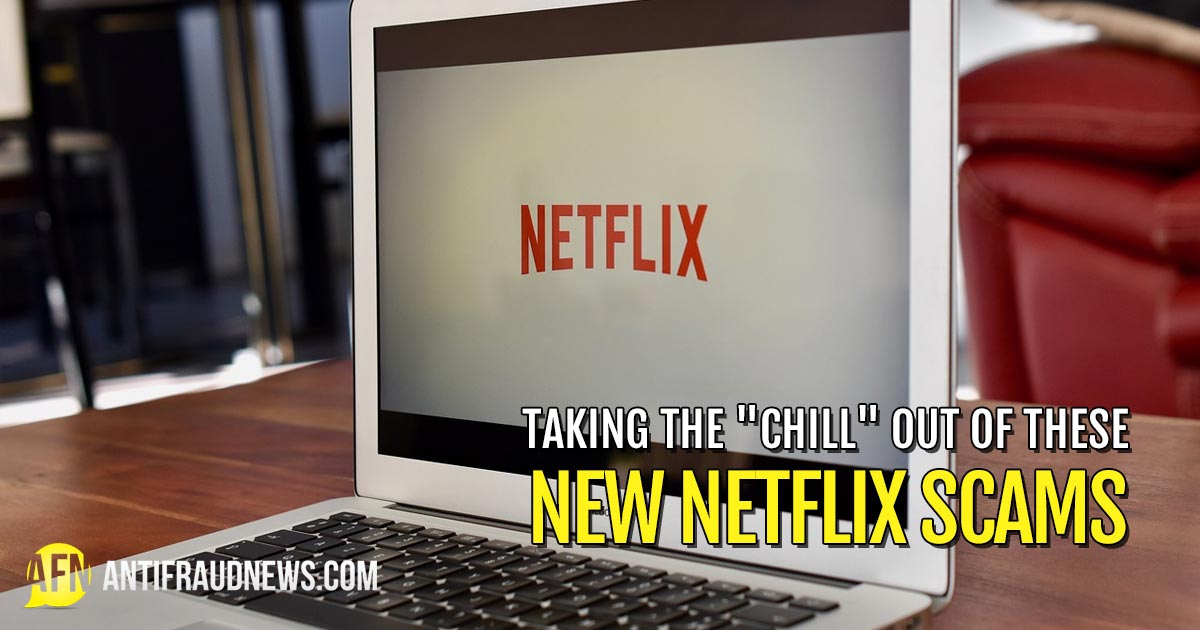
As we are once again consumed by the daily grind, the U.S. Federal Trade Commission (FTC) has warned of the latest Netflix Scams invading our in-boxes. Scammers are using e-mails masquerading as communication sent out by the company requesting recipients update their personal information, such as payment details, via a click through link. Recipients of these e-mails take note! Should you happen to click though the “secure link”, you will accidentally download malware that will pretty much render your device locked.
Discover Discrepancies By Paying Attention To Detail
A Solon police officer who doesn’t have a Netflix account received one of these phony e-mails and posted a screen shot of it to warn potential victims not to fall for the bait. Even though it looks legit at face value, there are some tell-tale clues alerting you to question the authenticity of it. Bad grammar and poor spelling are just two of the signs indicating that you have been sent an e-mail designed to steal your private information, such as social security number, banking details and account username or password.
Phishing scams like these Netflix Scams are fast-becoming the worst kind of on-line fraud and regularly target private individuals as well as organizations in an attempt to steal personal information. Recipients are easily tricked into sending their information to these fraudsters, either by direct links or replying to the fake e-email. Even though there is extensive awareness and education around phishing scams, most of us believe them to be from a reliable source. It literally takes seconds for you to send your sensitive information to a predator, subscribe to unwanted pay-for services, and download harmful malware. The sheer thought of it is enough to leave you cold.
How Do You Know You Are The Recipient Of A Scam E-mail?
Initially you won’t know. E-mails like these are intended to convince you that they are from the real source. It is only upon further scrutiny, you will identify that the origin is suspect. Here are a few indicators that could help you identify a phishing e-mail:
- grammar or spelling mistakes
- it is addressed in a generic manner e.g.: “Dear Member”, “Hello Dear”
- tonality of the content is more formal or less formal
- links requesting personal information
- you are not a member or customer
- poor quality graphics, watermarked images
However, should the e-mail seem authentic, yet you still have a niggling feeling that there is something not so Kosher about it, then there are organizations that offer protective subscription services. A word of caution though – you must ensure the legitimacy before engaging in any contracts or subscription services offered.
What Must I Do If I Suspect I have Received the Netflix Scam E-mail?
Netflix have urged recipients of these phishing e-mails, be vigilant, and to avoid clicking on any links like these at all costs. The streaming service takes their customers security very seriously and has verified they will never ask for any personal information to be updated or sent to them via e-mail. If you believe you have received a Netflix Scam e-mail, never enter your personal information, nor click any links, and most certainly do not reply to it. Instead it should be forwarded to the Netflix Help Center, with the message header information included. Alternatively, you can contact Netflix directly using a link you have sourced yourself and trust. If you are concerned about the legitimacy of your account, then go directly to the website and log into your account as you usually do. You will soon establish if your account has been compromised, as well as confirm that the scam e-mail is not from a reputable source.
If you suspect you have received a clone email from any other provider, the FTC recommends consumers report phishing scams agency’s spam@uce.gov address and to reportphishing@apwg.org. In addition to this, it is recommended that you report any such e-mails to the impersonated party directly.
